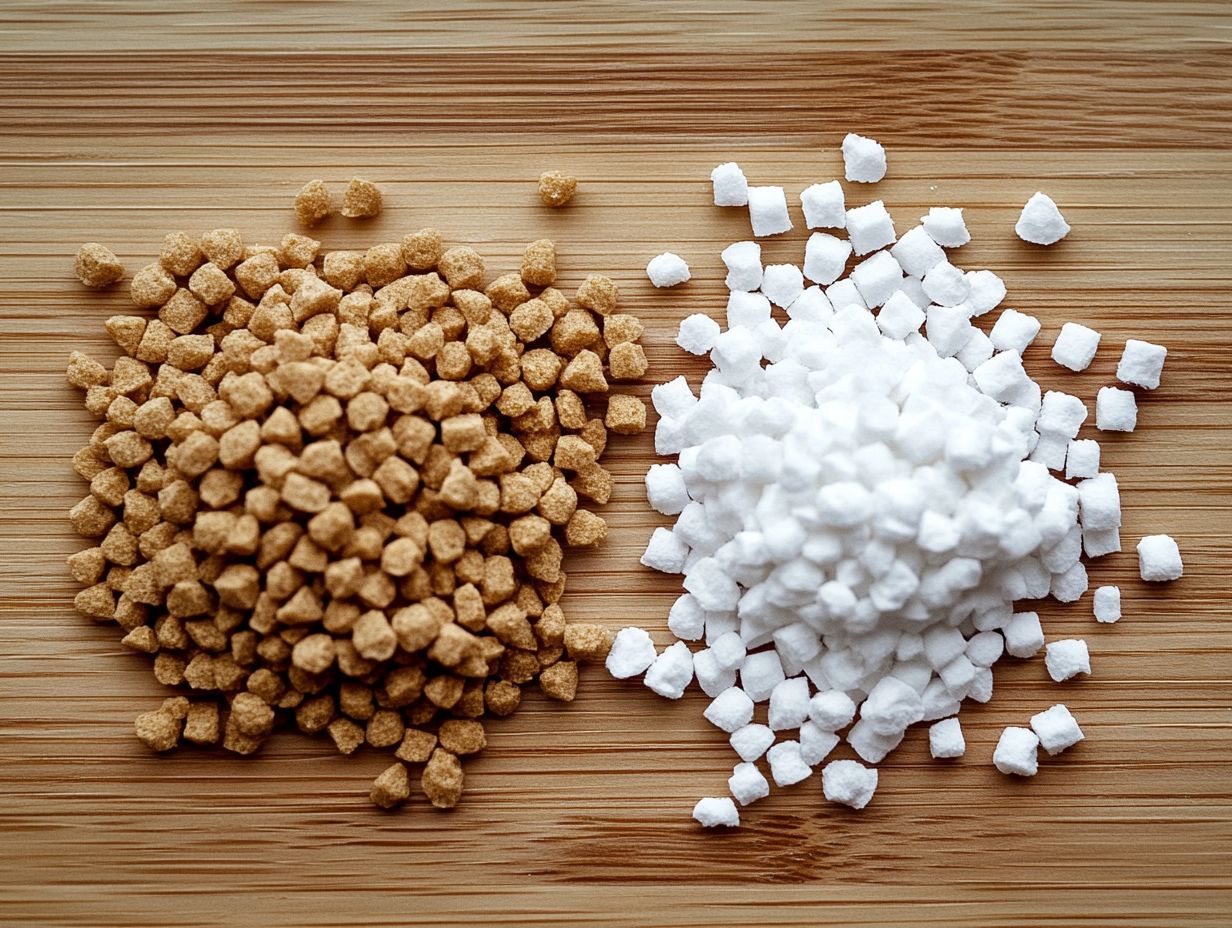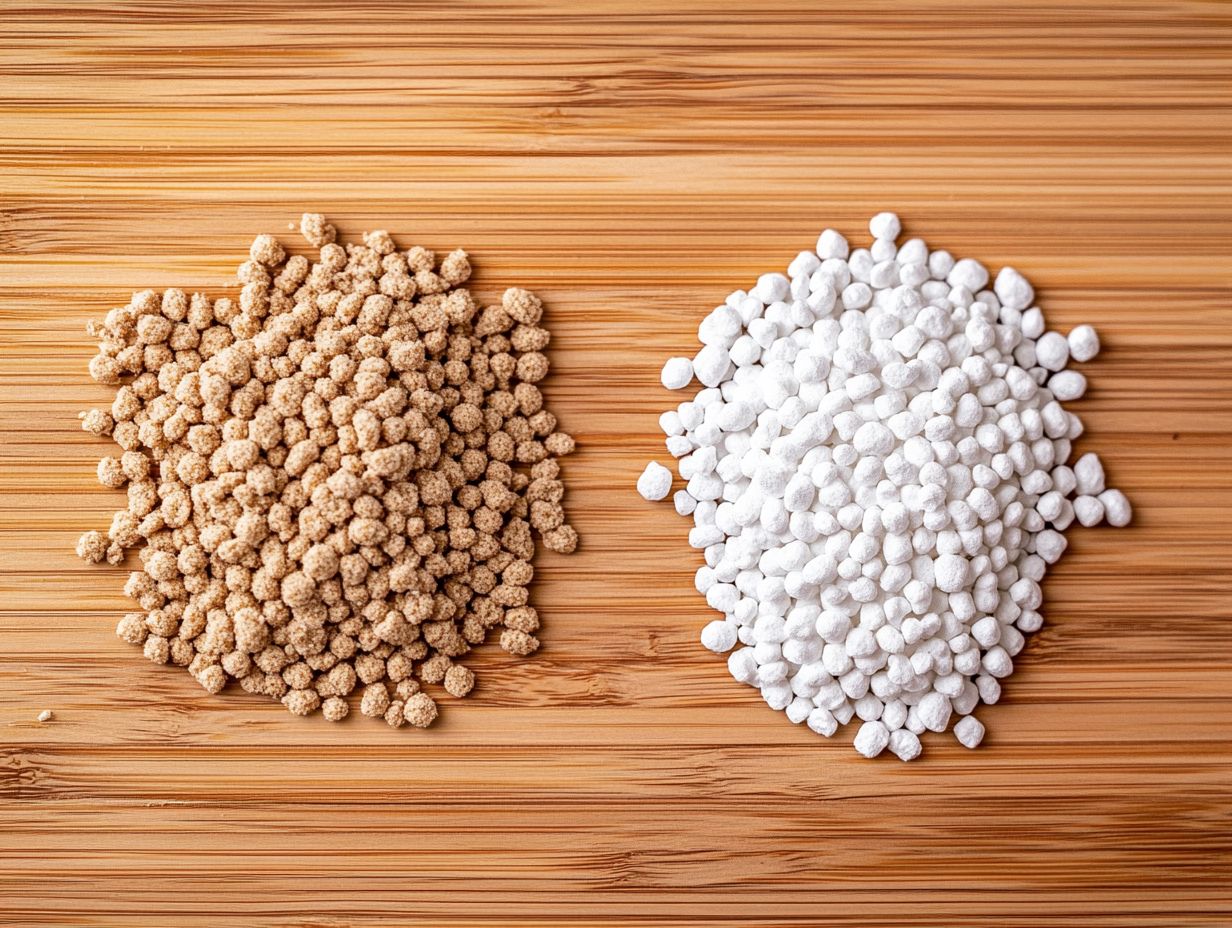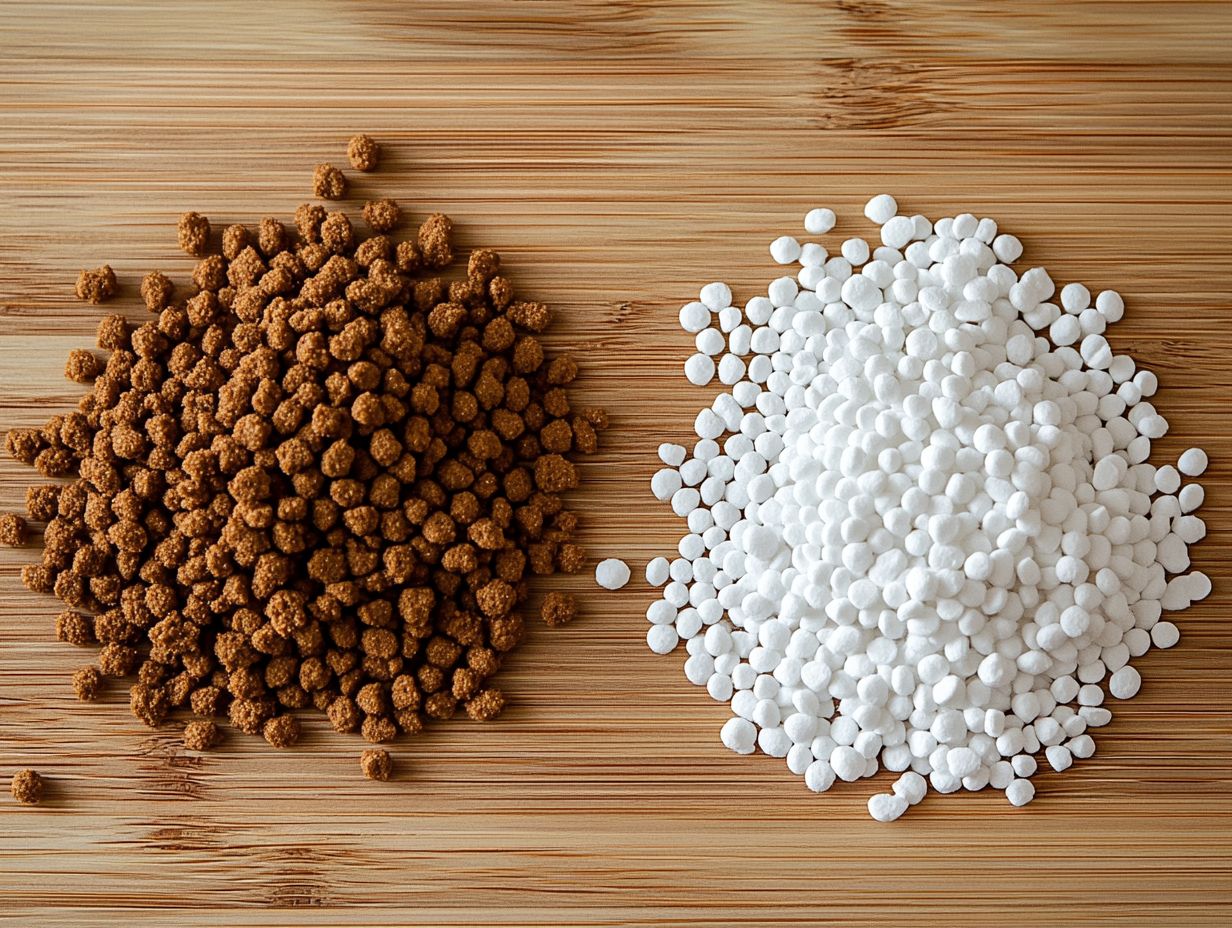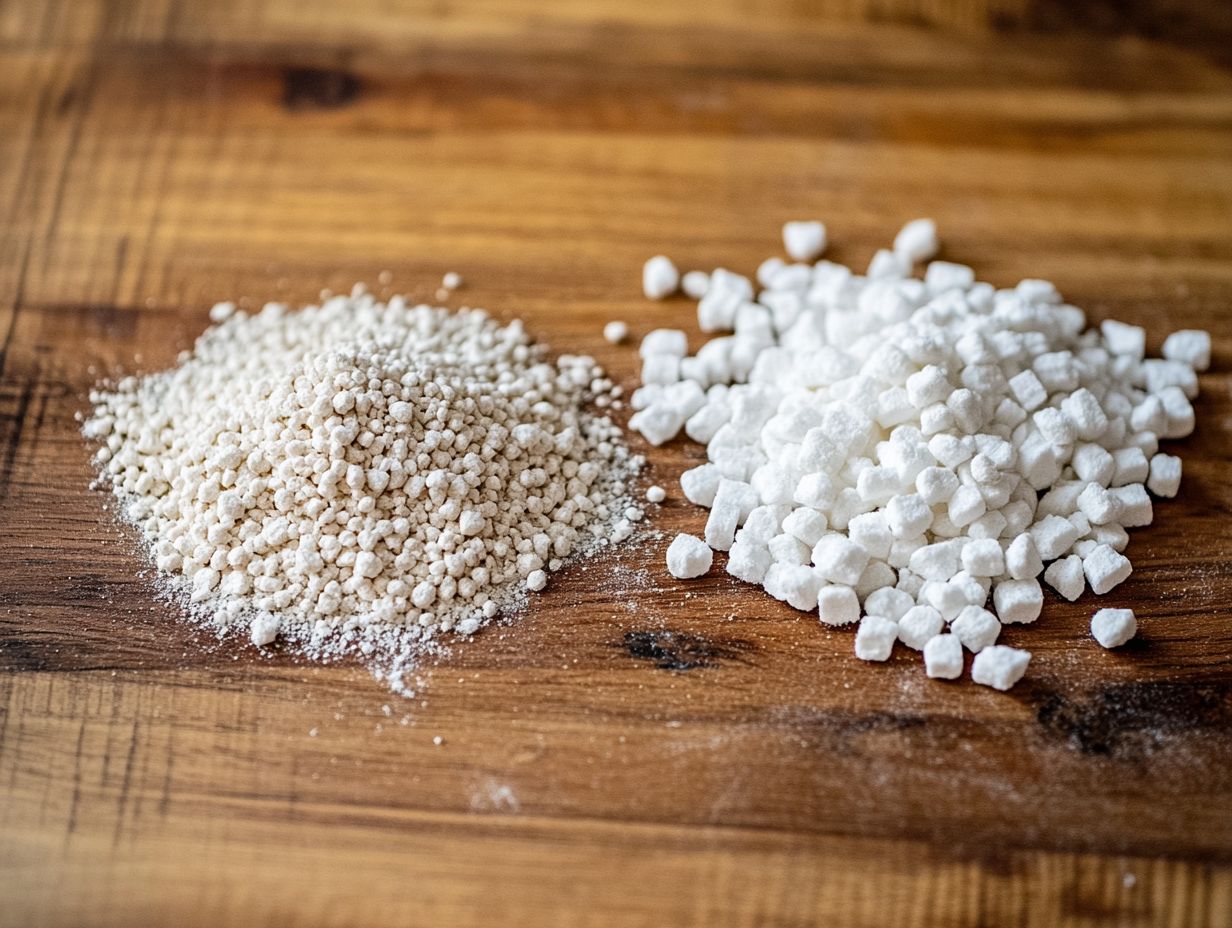Are you looking for a creative and budget-friendly alternative to perlite for your gardening needs? Many plant lovers, including cacti enthusiasts, have turned to cat litter as a potential substitute, but is it really a good idea?
This article explores the similarities and differences between cat litter and perlite, weighing the pros and cons of using cat litter in your potting mix, and provides essential gardening tips.
Alternatives like vermiculite, pumice, and coconut coir, along with key considerations such as substrate ingredients and sustainable options, will also be discussed to ensure your plants thrive.
Dive in to discover if this unconventional choice could work for you!
Key Takeaways:

- Cat litter can be a cost-effective and easily available alternative to perlite, with the added benefit of moisture absorption and serving as a lightweight material for your gardening projects.
- However, cat litter may contain harmful chemicals, is not sterile, and may not provide adequate aeration for plants. Consider alternatives like vermiculite, pumice, and coconut coir before using cat litter as perlite. Be mindful of its overall effect on plant growth and environmental impact.
What Is Perlite?
Perlite is a lightweight and versatile volcanic glass widely used in gardening and horticulture due to its excellent drainage properties and ability to improve soil aeration. This mineral-based substrate is particularly favored by both amateur and professional gardeners for creating optimal growing conditions in raised beds and potting mixes. It is especially beneficial for growing succulents and addressing compacted soil issues.
Its unique structure enhances water retention while preventing soil compaction, making it an ideal choice for various plant types, including succulents and cacti.
What Is Cat Litter?
Cat litter is a substance used in litter boxes to absorb moisture and odors from cat waste. There are various options available on the market, including biodegradable litters made from organic materials, non-clumping clay-based litters, and silica gel. Each type has different moisture absorption capabilities and environmental impacts, making them relevant to gardening challenges.
Selecting the appropriate cat litter can significantly affect both pet health and environmental sustainability.
Can Cat Litter Be Used as Perlite?
Gardening enthusiasts and forum members have been pondering whether cat litter can serve as a substitute for perlite, given that both materials are recognized for their moisture absorption and drainage properties that can enhance soil amendments. Testimonials from users on online forums have shown varying opinions.
While cat litter may offer a more affordable option for improving drainage in potting mixes, there are important considerations regarding its chemical composition—which refers to the various chemicals it may contain—and potential drainage issues that could negatively impact overall plant health.
Health Considerations
When considering using cat litter, be cautious of types that contain harmful additives such as fragrance or clumping agents. Opt for unscented, natural brands that are clay-free where possible, as they are less likely to contain chemicals that could harm your plants.
Environmental Impact
Choosing environmentally friendly cat litter options, such as biodegradable litters, can significantly reduce your gardening footprint. It’s essential to assess not only the effectiveness of the litter but also its sustainability.
What Are the Similarities Between Cat Litter and Perlite?
Cat litter and perlite share several important similarities that make them both excellent materials for enhancing soil conditions in gardening. Both substances possess strong moisture absorption capabilities, allowing them to retain the water essential for plants while also providing drainage to prevent soil compaction, thereby promoting healthy root growth and development.
Additionally, cat litter and perlite have lightweight textures that aid in soil aeration, ensuring that roots receive adequate oxygen. When mixed into potting soil, these components can significantly enhance the soil’s water-holding capacity without compromising drainage.
Unscented cat litter can be incorporated into potting soil at a ratio of approximately 1:4, while perlite can be added to vegetable and flower beds to improve water retention during periods of drought.
What Are the Differences Between Cat Litter and Perlite?
Cat litter and perlite are both used to manage soil moisture, but they differ in composition, effectiveness, and suitability as soil amendments in gardening. Understanding these differences can aid in successful propagation techniques for various plant interests.
Alternatives to Consider
- Vermiculite: Excellent for moisture retention and aeration, ideal for seedlings.
- Pumice: A natural, lightweight volcanic rock that enhances drainage.
- Coconut Coir: A sustainable, biodegradable option that retains moisture and improves soil structure.
Conclusion
In conclusion, while cat litter may offer a budget-friendly alternative to perlite, its safety and effectiveness depend heavily on the type chosen. Always prioritize pet-friendly and environmentally sustainable options to ensure the health of your plants. For best results, consider using traditional amendments like perlite or alternative materials that meet your gardening needs.
Cat litter is primarily designed for waste absorption and may contain harmful chemicals. In contrast, perlite is a mineral-based substrate specifically formulated to improve drainage and aeration in potting mixes. Understanding these differences is crucial for gardeners, particularly those growing sensitive plants that require specific soil conditions.
Cat litter often contains additives like scents or clumping agents—which help the litter form into clumps for easier cleaning—that can be detrimental to plant health. Meanwhile, perlite is chemically inert and safe for all types of plants.
Professional gardeners have noted that perlite enhances root development and increases airflow to the soil, making it ideal for succulents and other plants that thrive in well-draining conditions. In contrast, cat litter can lead to waterlogged roots and a compromised growing medium, especially for beginner gardeners who may not be aware of these distinctions.
What Are the Pros of Using Cat Litter as Perlite?
Using cat litter as a substitute for perlite offers several advantages, including lower cost, greater availability, and easier access for casual gardeners and cactus enthusiasts. This approach aligns with practical gardening advice for budget-conscious horticulturists.
Cat litter effectively absorbs moisture and can enhance soil conditions, helping to address drainage issues, particularly in compacted soil or raised beds.
1. Cost-effective

Cat litter can serve as an economical substitute for perlite, enabling gardeners to save money while still achieving essential soil characteristics for various plant types. Many gardeners are discovering that a bag of cat litter often costs significantly less than a similarly sized bag of perlite, sometimes being 30% cheaper or more.
For instance, while a 4-cubic-foot bag of perlite may exceed $20, an equivalent amount of cat litter can frequently be purchased for $15 or less. This cost difference can be particularly beneficial for owners of larger gardens, where the demand for soil amendments can quickly add up.
Additionally, cat litter retains moisture effectively, which can reduce the frequency of watering and thus lower water bills for gardeners conscious of their environmental impact. For these reasons, incorporating cat litter into gardening practices not only preserves soil integrity but also enhances financial feasibility for plant owners.
2. Easily Available
The primary advantage of cat litter is its accessibility at gardening supply shops and common retailers like Walmart and Tesco, making it an easily sourced material for gardeners looking to enhance soil drainage. This convenience allows gardening enthusiasts to pick up a bag during their regular shopping trips instead of having to seek out specialized gardening stores. It’s a beneficial option for those dealing with drainage issues in compact soil.
Brands like Tidy Cats and Arm & Hammer provide both clumping and non-clumping options, serving as cost-effective alternatives to traditional soil amendments. Gardeners have reported success with specific types, such as silica gel or clay-based cat litter, which offer excellent aeration and moisture retention.
3. Absorbs Moisture
Another beneficial characteristic of cat litter is its high moisture content, which can enhance soil health and drainage when incorporated into potting mixes for cacti and succulents. This feature helps prevent overwatering and promotes root growth in drought-resistant plants, a key consideration for successful cultivation.
When added to standard garden soil, cat litter functions as a moisture reservoir, preserving and evenly distributing essential nutrients, thus fostering a healthier ecosystem that supports the growth of various vegetables and flowers.
Additionally, its lightweight texture makes it an ideal additive for raised beds, improving aeration and drainage—both crucial for plant health and vitality.
What Are the Cons of Using Cat Litter as Perlite?
The drawbacks of using cat litter instead of perlite include the potential presence of harmful chemicals, a lack of sterility, and limited aeration, all of which can adversely affect plant health and hinder successful growth. Considering eco-friendly and sustainable options, such as horticultural sand or compost, might be more suitable for long-term planting success.
1. May Contain Harmful Chemicals
Some cat litters contain additives that may be harmful to plants, such as fragrances or clumping agents. It’s important to choose brands that are safe for gardening, particularly those labeled as natural or specifically designed for use in potting mixes.
Transitioning from Perlite to Cat Litter
For gardeners interested in making the switch from perlite to cat litter, consider mixing cat litter with existing soil at a ratio of 1:4 (one part cat litter to four parts soil) to start. This helps to maintain moisture without overwhelming plant roots. Always monitor plant health and adjust the mixture as needed.
Conclusion
Using cat litter as a substitute for perlite can offer several advantages, such as cost-effectiveness and availability, but it also comes with potential drawbacks, including harmful additives and sterility concerns. Gardeners should weigh these factors carefully and consider eco-friendly alternatives or best practices for those considering this option.
The primary danger of cat litter lies in the chemicals found in clay-based or silica gel varieties, which can harm plant life and disrupt land ecosystems. These materials often contain additives and toxins that may leach into the soil, adversely affecting local ecosystems and harming beneficial microorganisms. However, it’s important to note that not all clay-based litters are harmful; some brands prioritize eco-friendliness and sustainability.
As these harmful substances accumulate, they can stunt plant growth and contaminate groundwater, posing risks to local agriculture. To mitigate these dangers, pet owners should consider using the best eco-friendly cat litter brands, such as biodegradable options made from recycled paper, corn, or wheat. These alternatives reduce chemical exposure, nourish the soil, and offer pet owners and the environment a safer, more sustainable product.
2. Not Sterile
Unlike perlite, a lightweight volcanic glass that is typically sterile and free of pathogens, cat litter can introduce harmful bacteria and pests into the soil, potentially worsening gardening issues. The use of non-sterile materials can negatively impact soil health, leading to reduced plant growth and an increased susceptibility to diseases.
Contaminated soils can harbor pathogens that not only affect the plants themselves but can also spread to the surrounding ecosystem. For gardening enthusiasts, it is essential to use high-quality, safe products while also considering alternative options. Materials that could enhance soil fertility should be avoided; instead, compost or commercial soil additives are preferable, as they enrich the soil without introducing additional risks.
By following these best practices, such as selecting organic soil amendments and maintaining cleanliness, gardeners can promote the safe and healthy growth of their plants.
3. May Not Provide Adequate Aeration
One disadvantage of using cat litter compared to perlite is that it is not as aerated. Adequate aeration is crucial for plants, as insufficient airflow can lead to inefficient nutrient uptake and an increased risk of root rot. Perlite, a fine white powder, promotes better drainage and supports healthier root growth.
This concern is especially relevant for home gardeners, as high-quality soil is vital for plant development. To compensate for the lack of aeration in soil, incorporating components such as compost or adding a top layer of organic mulch can enhance soil structure and create air pockets.
Additionally, exploring alternatives to cat litter, such as coconut coir or expanded clay pellets, can provide the necessary porous qualities for robust plant growth. These materials allow for better drainage and air circulation, essential for thriving plants.
What Are the Alternatives to Perlite?

Alternatives to perlite include vermiculite, pumice, and coconut coir, all of which enhance soil aeration and moisture retention. Each option has unique benefits, making them more suitable for different gardening situations. For instance, vermiculite is excellent for seed starting due to its ability to retain moisture, while pumice is ideal for cactus and succulent gardens.
1. Vermiculite
Vermiculite is a well-known alternative to perlite, offering excellent soil aeration and moisture retention. It provides a balanced amount of air space and water retention, ensuring that plant roots receive both oxygen and moisture. This makes it valuable in many potting mix substrates.
Its lightweight structure enhances the ease of handling soils, while its unique ability to absorb and bind nutrients makes it suitable for a wide variety of crops and plants, including vegetables and houseplants. Gardeners appreciate that vermiculite helps prevent soil compaction and improves overall aeration, particularly in containers and raised beds, promoting healthier root systems and vigorous growth.
2. Pumice
Pumice is a highly beneficial soil amendment that offers excellent drainage and aeration, making it a popular choice among professional gardeners and cactus enthusiasts. Its lightweight nature helps prevent soil compaction, which in turn supports better root development and promotes stronger plant growth.
When combined with other organic materials, pumice retains moisture while allowing excess water to escape. This property makes it suitable for a wide range of plants, including succulents, orchids, and even ferns, supporting healthy growth and discouraging root rot. Consequently, pumice is increasingly becoming a common component of planting mixes for both horticulturists and home gardeners.
3. Coconut Coir
Coconut coir is another effective alternative, derived from the fibrous husks of coconuts. It retains moisture well and promotes healthy root systems while also being biodegradable. Its sustainability makes it an excellent choice for environmentally conscious gardeners.
In conclusion, understanding the health concerns associated with cat litter is essential for making informed decisions that benefit both pet health and environmental sustainability. By choosing eco-friendly options and exploring alternatives to perlite, gardeners can enhance their soil quality and promote healthier plants.
Coconut coir serves as an eco-friendly alternative to perlite, offering high moisture retention and a sustainable option for enhancing soil health in potting mixes. This natural fiber derived from coconut husks reduces reliance on synthetic materials and promotes environmental stewardship.
Coconut coir improves air circulation (the movement of air in soil) and provides a medium for beneficial microbes in the soil, which in turn fosters healthy plant growth. As a biodegradable organic matter, it appeals to eco-conscious gardeners by enhancing nutrient availability, promoting plant health, and supporting ecosystem interdependence.
Considerations Before Using Cat Litter as Perlite
Gardeners should carefully consider the pros and cons of using cat litter as a substitute for perlite, taking into account their specific plant interests, the potential presence of harmful chemical contents, and the overall effectiveness of cat litter in promoting healthy root growth and propagation techniques.
It is crucial to assess the type of cat litter being used, as some brands may contain additives or clumping agents that could be detrimental to plants. Additionally, the drainage capabilities (the ability of the soil to allow water to flow through) of the litter should be evaluated; poor drainage can lead to waterlogging and root rot. The pH level (acidity or alkalinity of the soil) of the litter is also important, as it must be suitable for the plants being cultivated.
While adding cat litter to potting mixes can enhance air circulation, it should be used sparingly. Incorporating it into a textured soil mix may improve soil performance during the propagation of cuttings or seedlings, helping to create a medium that supports healthy growth.
Overall Effect on Plant Growth
The impact of using cat litter instead of perlite on plant growth can be either positive or negative, depending on the type of cat litter and its properties, as well as its overall effects on soil health.
Some types of cat litter, particularly those made from natural materials such as clay or corn, can enhance moisture retention and drainage. However, other varieties may contain additives or chemicals that could be detrimental to plant growth.
Gardeners interested in using this alternative substrate should thoroughly investigate the ingredients and properties of their chosen cat litter to ensure it does not contain harmful substances. It is also important to closely monitor the effects of different cat litter types on plants by observing growth patterns and conducting pH tests to gauge soil health, as various species may respond differently to the texture and chemical composition of the litter.
Adjustments in moisture and nutrient levels in the soil are key factors that can significantly influence the overall health and yield of the plants.
Frequently Asked Questions
Can cat litter be used as perlite?

Yes, cat litter can be used as a substitute for perlite in gardening applications. However, there are some pros and cons to consider before using it. Verify the claims related to cat litter and its suitability as a substitute for perlite with trusted gardening sources.
What are the pros of using cat litter as perlite?
Using cat litter as perlite can be more cost-effective, as it is typically cheaper than actual perlite. It also has similar properties, such as being lightweight and porous, making it a suitable replacement in soil mixtures.
What are the cons of using cat litter as perlite?
One major con is that cat litter is not specifically designed for gardening purposes and may contain chemicals or additives that could be harmful to plants. It may also break down more quickly than perlite, requiring more frequent replacement.
What type of cat litter should be used as perlite?
If you do decide to use cat litter as perlite, make sure to choose a non-clumping, unscented variety. Clumping litter can become compacted and trap moisture, while scented litter may contain chemicals that are harmful to plants. Always check labels and select natural, additive-free options.
Can cat litter be used as perlite in all types of plants?
Not all plants will benefit from the use of cat litter as perlite. Some plants, such as succulents, may require a more specific type of soil mixture and may not respond well to the properties of cat litter. It is best to do some research and consult with a gardening expert before using it in your plant’s soil.
Are there any alternatives to using cat litter as perlite?
There are several alternatives to using cat litter, including vermiculite and rice hulls, which can also provide similar benefits in soil mixes.
How do I know if my cat litter is safe for plants?
Check the ingredient list for harmful additives and choose natural, unscented, and non-clumping types to minimize risks.
What are the signs of nutrient deficiency in plants using cat litter?
Common signs include yellowing leaves, stunted growth, or poor flowering. Regular monitoring can help catch these issues early.
Conclusion: Using cat litter as a substitute for perlite can be a cost-effective option for gardeners, but it’s essential to choose the right type and monitor plant health closely. Always investigate the ingredients and properties of cat litter and opt for those with minimal additives. This will help ensure a successful gardening experience.
Alternative Materials to Perlite
Yes, there are other materials that can be used as an alternative to perlite. Some options include vermiculite, pumice, and sand. Vermiculite retains moisture well and improves aeration, making it ideal for seed starting. Pumice provides excellent drainage and aeration, which benefits root development, while sand can improve soil drainage but may not retain moisture effectively. Each of these materials is specifically designed for gardening purposes and may be a better choice for certain plants.
Pet Safety Considerations
If you have pets, it is important to consider their safety when using cat litter as perlite. Some cats may be drawn to the litter in the soil, which could be harmful if ingested. Certain types of cat litter, especially those containing fragrances or clumping agents, can be particularly harmful. To ensure the safety of your pets, consider using pet-friendly alternatives to cat litter, such as recycled paper or natural wood-based litters. Additionally, it’s best to keep an eye on your pets and implement best practices, such as placing barriers around your plants or ensuring that the area is pet-proofed to prevent ingestion.
Conclusion
When choosing pet-safe gardening materials, always read labels carefully and consult with veterinarians if necessary. The right materials can enhance your gardening experience while keeping your furry friends safe.